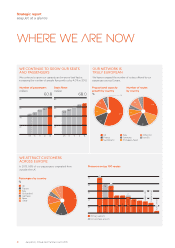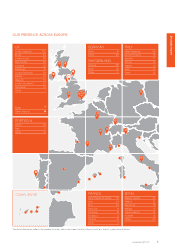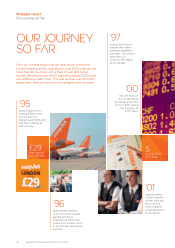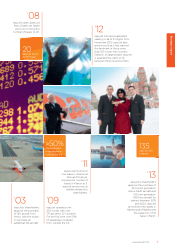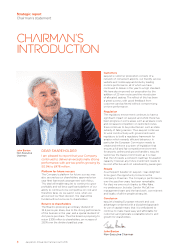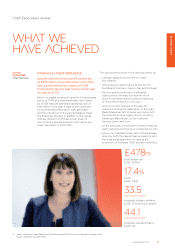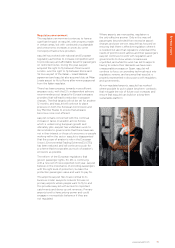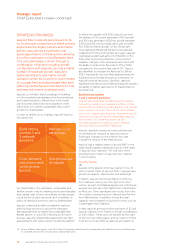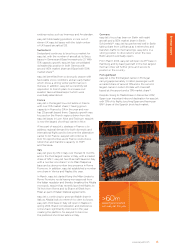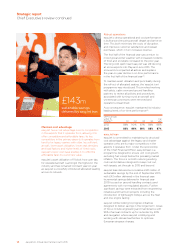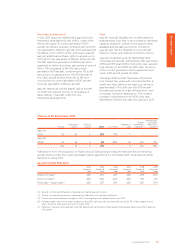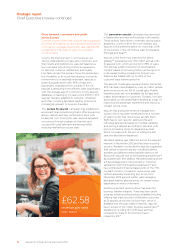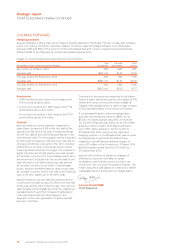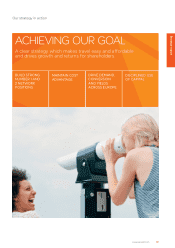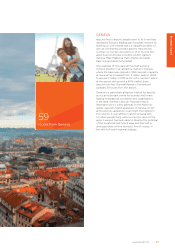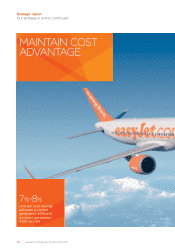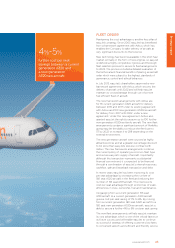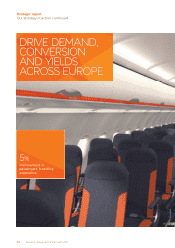EasyJet 2013 Annual Report Download - page 16
Download and view the complete annual report
Please find page 16 of the 2013 EasyJet annual report below. You can navigate through the pages in the report by either clicking on the pages listed below, or by using the keyword search tool below to find specific information within the annual report.
14 easyJet plc Annual report and accounts 2013
Strategic report
Chief Executive’s review continued
Robust operations
easyJet’s strong operational and cost performance
is built around ensuring aircraft depart and arrive on
time. This both minimises the costs of disruption,
and improves customer satisfaction and repeat
purchases, which in turn increases revenue.
The first half of the financial year saw a return to
more typical winter weather with increased incidents
of frost and snowfalls compared to the prior year.
The long cold spell meant easyJet was still de-icing
at some airports into May and June 2013. The
snow and ice impacted all airlines and explains
the year-on-year decline in on-time performance
in the first half of the financial year(3).
To maintain asset utilisation and punctuality during
the roll-out of allocated seating, the ‘easyJet turn’
programme was introduced. This involved working
with pilots, cabin crew and ground handling
partners to review all policies and procedures
associated with turning round an aircraft and
unnecessary processes were removed and
operations streamlined.
As a consequence, easyJet maintained its industry
leading levels of on-time performance(4).
OTP % arrivals
within 15
minutes(3) Q1 Q2 Q3 Q4
Full
year
2012 88% 90% 87% 88% 88%
2013 86% 86% 89% 88% 87%
easyJet lean
easyJet is committed to maintaining its structural
cost advantage against the legacy and charter
operators who are its major competitors in the
airports it operates from. Under the sponsorship
of the Chief Financial Officer, easyJet lean is a
programme designed to ensure unit cost growth
excluding fuel is kept below the prevailing market
inflation. The focus is on both reducing existing
costs and initiatives designed to keep cost out,
with targets set through to 2015 and beyond.
easyJet lean delivered a cumulative £143 million of
sustainable savings by the end of September 2013,
with £43 million delivered in the financial year.
Incremental savings delivered in financial year
2013 focused on ground handling contracts and
agreements with non-regulated airports. Further
significant savings were extracted from engineering
initiatives and fuel burn projects including the
introduction of lightweight trolleys across the fleet
and one engine taxiing.
easyJet will be looking to progress initiatives
designed to deliver savings in the longer term. Areas
of focus include engineering and maintenance with
95% of annual contracts up for re-tender by 2015
and navigation where easyJet is lobbying and
working with relevant authorities to optimise
European airspace charges.
Maintain cost advantage
easyJet has a cost advantage over its competitors
in the airports that it operates from, allowing it to
offer competitive and affordable fares. Its key
competitors in the primary airports it operates from
tend to be legacy carriers with older, less efficient
aircraft, lower asset utilisation, lower seat densities
and load factors and higher levels of fixed costs.
easyJet’s lower cost base enables it to offer the
affordable fares its customers value.
easyJet’s asset utilisation of 11 block hours per day
for operated aircraft is amongst the highest in the
industry and has remained constant year-on-year
as easyJet successfully introduced allocated seating
across its network.
£143m
sustainable savings
delivered by easyJet lean


